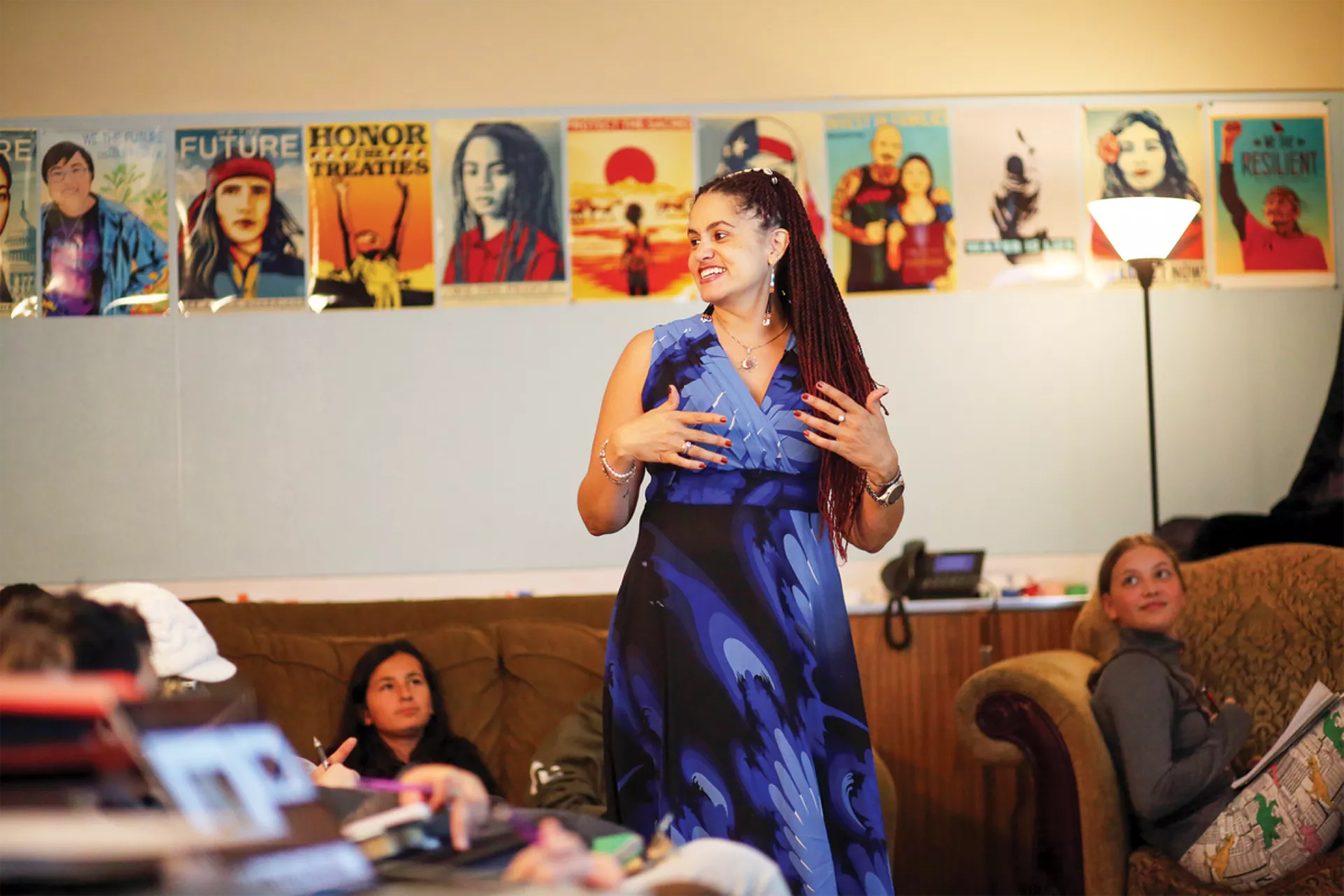The wood-carving of a Plains Indian chief with a feathered headdress, situated at the school’s entrance and aging in Oregon’s elements, told me everything I needed to know the moment I drove up to the school. I decided to give the school the benefit of the doubt.
I joined them in efforts to share multicultural literature, as the hiring principal requested, yet I had no idea what was in store. That year, the resistance I received from the student body about Native American literature and cultural clips suffocated any hope that I could make a difference. No matter how hard I tried, students shared rude commentary with no shame, and peers laughed in support.
I had to teach the required text I Heard The Owl Call My Name, which they considered an indigenous text, despite it being written by a white woman. It was a nightmare sharing secondary sources from actual Native Americans. The students never shied away from sharing their bigotry. These students loved their Indian mascot, so my supplementary materials on indigenious history irritated them profusely. It was all too much, too overwhelming. Students fought me with every new resource in order to return to their comfort zone, rather than working through their discomfort. I learned a lot about Oregon from this small town high school, so close to Portland, but so far from reality.
Oregon needed Senate Bill 13 (SB13), now known as Tribal History/Shared History, decades ago. Thankfully, we no longer have to wait. Oregon’s nine federally recognized tribes of Oregon worked long and hard to ensure that our Oregon students will receive an accurate and authentic education that covers the Native American experience in Oregon, including tribal history, sovereignty issues, culture, socioeconomic experiences, and more.

Implementation of SB13 begins January 2020 with nine essential understandings, which lay the foundation for Oregon students to learn about local Native Americans who survived atrocities while maintaining their strength, resilience, beauty and determination.
As an Indigenous educator of 21 years, it is a huge relief to see our state head in this direction. This summer, I attended OEA’s Committee on Racial Equity (CORE) Pre-Conference on Tribal History/Shared History to learn about SB13. I was blown away at the presentation by Dr. Leilani Sabzalian, an Assistant Professor of Indigenous Studies in Education at the University of Oregon. Staff from ODE’s Indian Education Office, Education Northwest and OEA also shared information and resources about how the Essential Understandings can be used in the classroom. I left the training no longer feeling lost in doing this crucial work, and the lesson plans the tribes have offered so far are impressive.
As I begin my first year of teaching middle school humanities, my students will not only learn the canon curriculum, they will also identify the nine federally recognized tribes of Oregon and learn these “Essential Understandings” of Native Americans in Oregon. Here are a few of my takeaways on each Essential Understanding, and how I plan to introduce them to my students.
SB 13 Essential Understandings
With the same intensity used to teach democracy and imperialism, Oregon’s tribal history can be given the same attention. Public education perpetuated racism towards Native Americans as they stole indigenous children to coerce assimilation in residential schools that practiced “Kill the Indian, and save the man.”
It only makes sense that the very institution that played a part in tearing down Native Americans amends their past actions with the Essential Understandings that will give educators honest teaching materials to begin Oregon’s healing.
